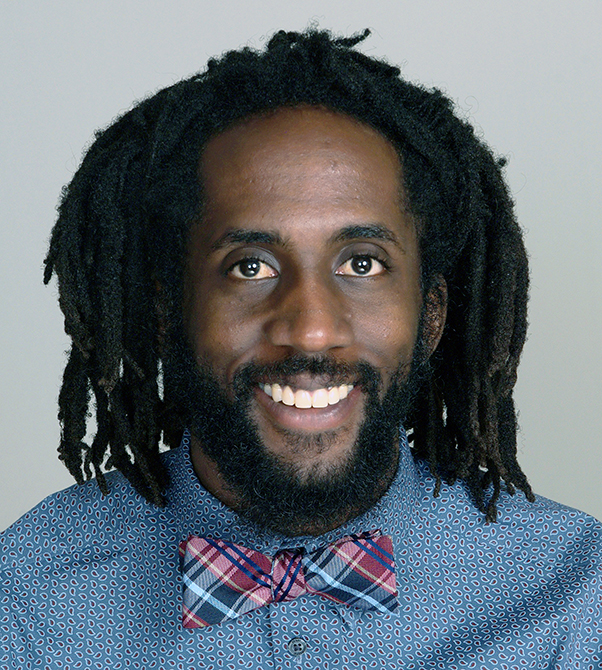Partisan infighting. Tariffs — yea or nay? Disaster preparation. What’s next in social media?
With a New Year just ahead, we asked some of our faculty experts to weigh in on those questions and others. Here are their predictions for what could await us in 2019.
► Prediction: Unfortunately, when it comes to the political forecast for 2019, I predict more stormy weather ahead.
By Dr. David Cohen, professor of political science and assistant director of UA’s Ray C. Bliss Institute of Applied Science

Dr. David Cohen
As Democrats take control of the U.S. House of Representatives, the Robert Mueller investigation continues, and the 2020 presidential race begins to heat up, 2019 will be a year of monumental, history-making events.
Gridlock and partisan infighting will continue and amplify as the Mueller probe likely comes to a conclusion and little of substance will be produced by Congress. As was the case 20 years ago, it’s quite possible that impeachment proceedings of the President will occur — a legal, political and media affair that would paralyze Washington and consume the attention of the American public. Should this occur, I am very confident in my prediction that President Donald Trump, against the advice of his legal team, would tweet about the proceedings in real time. This would all happen against the backdrop of the 2020 presidential campaign, which is expected to attract the biggest field of contenders for the Democratic party nomination in American history.
To quote Bette Davis’ character, Margo Channing, in the 1950 movie “All About Eve,” “Fasten your seatbelts, it’s going to be a bumpy night” — and in this case, year.
► Prediction: U.S. Supreme Court to address a wide variety of issues, including class actions and limits on administrative power.
By Professor Tracy A. Thomas, Seiberling Chair of Constitutional Law

Tracy A. Thomas
The Supreme Court’s docket for 2019 continues its interest in considering limits on class actions and class action settlements. This term the Court also examines many cases challenging the delegation of Congress’s power to administrative agencies and possible restrictions on that power. There is a wide variety of other cases before the Court as well, including multiple cases regarding Native American reservations, four cases on intellectual property and three cases on arbitration.
Court observers will be watching the two newest Justices to the Court — Justices Neil Gorsuch and Brett Kavanaugh. It is expected that Chief John Roberts will emerge as the central swing vote on the Court, although alliances may not be as politically expected, particularly in the areas of criminal law and First Amendment.
► Prediction: The tariff war will not (and should not) escalate any further in 2019.
By Dr. Sucharita Ghosh, professor of economics

Dr. Sucharita Ghosh
In 2018, the United States imposed tariffs on imports of solar panels, washing machines, steel, aluminum and Chinese goods, amounting to about 12 percent of its total imports. This, in turn, led to retaliatory tariffs by China, Canada, the European Union and Turkey, covering about 8 percent of total US exports. The impact of the 2018 tariffs is already being seen in rising costs and disrupted supply chains for U.S. companies that use imported inputs to produce goods and in higher market prices for the U.S. consumer. Further, U.S. exporters face higher retaliatory tariffs abroad and U.S. farmers have lost sales and markets abroad due to the retaliatory tariffs.
The ongoing tariff war would have escalated on Jan. 1, 2019, with tariffs increasing from 10 percent to 25 percent on $200 billion of Chinese imports, but a 90-day truce between the U.S. and China on Dec. 1, 2018, has temporarily put these on hold.
With recent data revealing a slowing Chinese economy and U.S. markets disrupted by the tariff uncertainty, my prediction is that the U.S. and China will reach an agreement and avoid these additional tariffs being imposed in 2019. Tariffs are not the solution to the broader concerns that the U.S. legitimately has with China regarding technology transfer and intellectual property rights. These should be addressed via direct negotiations with China and/or multilateral agreements with American allies such as the European Union and Japan.
► Prediction: Continued (re)emergence and facilitation of neurodiversity, especially in STEAM fields (science, technology, engineering, arts and mathematics)
By Dr. Ruel McKenzie, assistant professor in the Department of Polymer Engineering; coordinator and lead of the PULSe program to engage autistic students in scientific research

Dr. Ruel McKenzie
My prediction (ergo hope) for 2019 is a continued increase in global awareness and sensitivity toward neurological differences, especially on its impact to achieving success in traditional learning environments — a critical component of civilization that essentially provides training for social, intellectual and financial readiness. Typically, those with non-neurotypical temperaments find several aspects of learning in a traditional environment to be a challenge in practice and are often diagnosed as having a learning disability. This has historically been a stigmatizing label for those with neurological differences. The subsequent result has been an inadvertent limitation on the development and support of pedagogical approaches that appeals to and encourages neurodiversity.
As much as one in five people has some form of learning disability and postsecondary institutions are currently witnessing a surge in enrollment of such students. Postsecondary institutions, in general, have been slower to champion a sustainable conduit for these students, but have been progressively acknowledging their roles as critical to affect, from top-down, the societal outlook for such students.
The year 2019 will see this continued trend as more universities become intimately involved with ensuring access and evolving pedagogical practices to enable viable career paths for their neurodiverse student population.
► Prediction: What’s next in social media for 2019? Expect more new platforms and scrutiny, from users and regulators alike.
By Julie A. Cajigas, associate professor of practice and coordinator of the Professional Social Media Certificate in the School of Communication

Julie Cajigas
Social predictions often focus on what platforms will rise and what platforms will fall. With many developers anxious to capture the attention of 69 percent of American adults who utilize at least one social network (Pew Internet Study, 2018), it is likely that we will see a variety of new and different platforms emerge. Like previous years, however, few will become a permanent part of the landscape while others will be absorbed by larger, more established platforms as new extensions and services.
While shifts in the way platforms approach brand presence, paid advertising and user experience can always have an impact on user behavior, major platforms like Facebook and Instagram are unlikely to see a major downturn in popularity because many users have invested time articulating their network connections and curating personal content collections. An exception to this may be Twitter, where users are frustrated with the company for inconsistent monitoring and moderating of content. In the wake of Facebook’s Cambridge Analytica scandal, as well as Europe’s adoption of the General Data Protection Regulation (GDPR) regulations, expect to see increased scrutiny from users and regulators about the way social platforms guarantee safe storage of user data, protect user privacy and police their own networks in relation to hate speech, abuse and bullying.
► Prediction: There will be more data leaks and exposures in 2019.
By Dr. John Nicholas, professor of business and information technology

Dr. John Nicholas
There was a rising trend in data leaks and exposures in 2018. Human error, a lack of security smarts and/or sheer laziness makes exposed data more discoverable, and yet there’s no sign of data exposures dying down any time soon.
This makes the need for cybersecurity literacy and education even greater than in recent years.
The data privacy woes seen by Facebook will spread to other Silicon Valley giants. This will occur for the reasons stated and for the amount of money tech companies make selling personal data.
State and federal Laws will be debated and likely updated to help protect personal data. It is expected that tech companies will fight some of the proposed changes in order to lessen the economic impact these changes will have on them.
Researchers at the Florida Institute of Technology recently examined data on industry trends and predictions of future directions. Growth in the areas of network systems and information security professionals is 37 percent through 2022.
► Prediction: The coming year, 2019, will follow the same lines of current disaster escalation, unfortunately.
By Dr. Stacy Willett, professor of emergency management and homeland security

Dr. Stacy Willett
The year 2017 was the costliest natural disaster year on record. It certainly may be topped as we tally the destruction from 2018. Hurricanes and wildfires have dominated our landscape. Global disasters are also following the same patterns we see in the United States. Our dependence on technology is increasing, with our ability to protect those systems lagging behind.
As our vulnerabilities increase with both natural and technological disasters in the coming years, it is imperative that we work collectively to come up with new strategies and solutions to meet our dynamic disaster landscape. The silver lining is that The University of Akron has been active in generating cutting edge curriculum in Emergency Management and Homeland Security, as well as Cyber Disaster Management, and Cybersecurity to build the workforce needed to meet these challenges.
